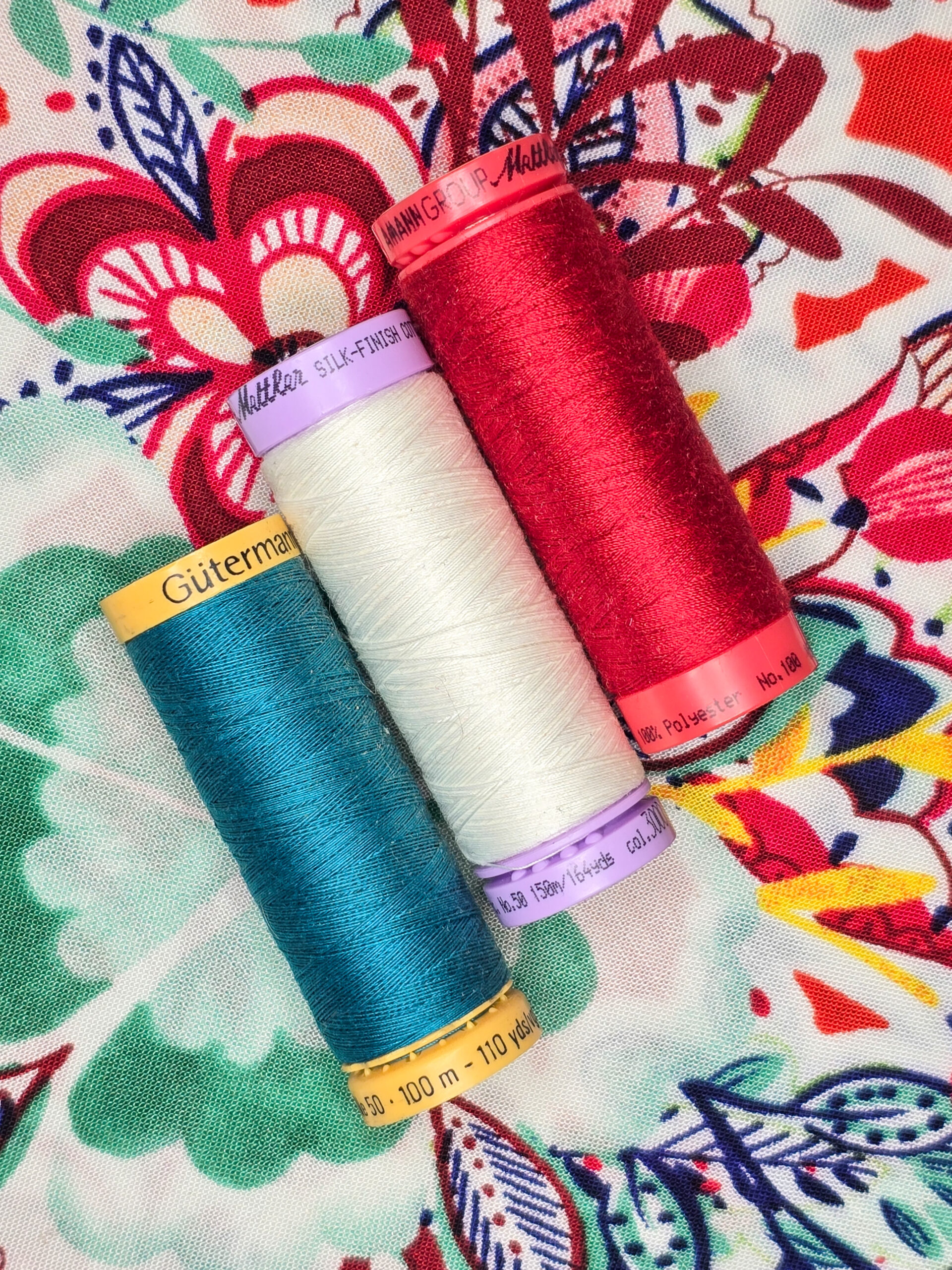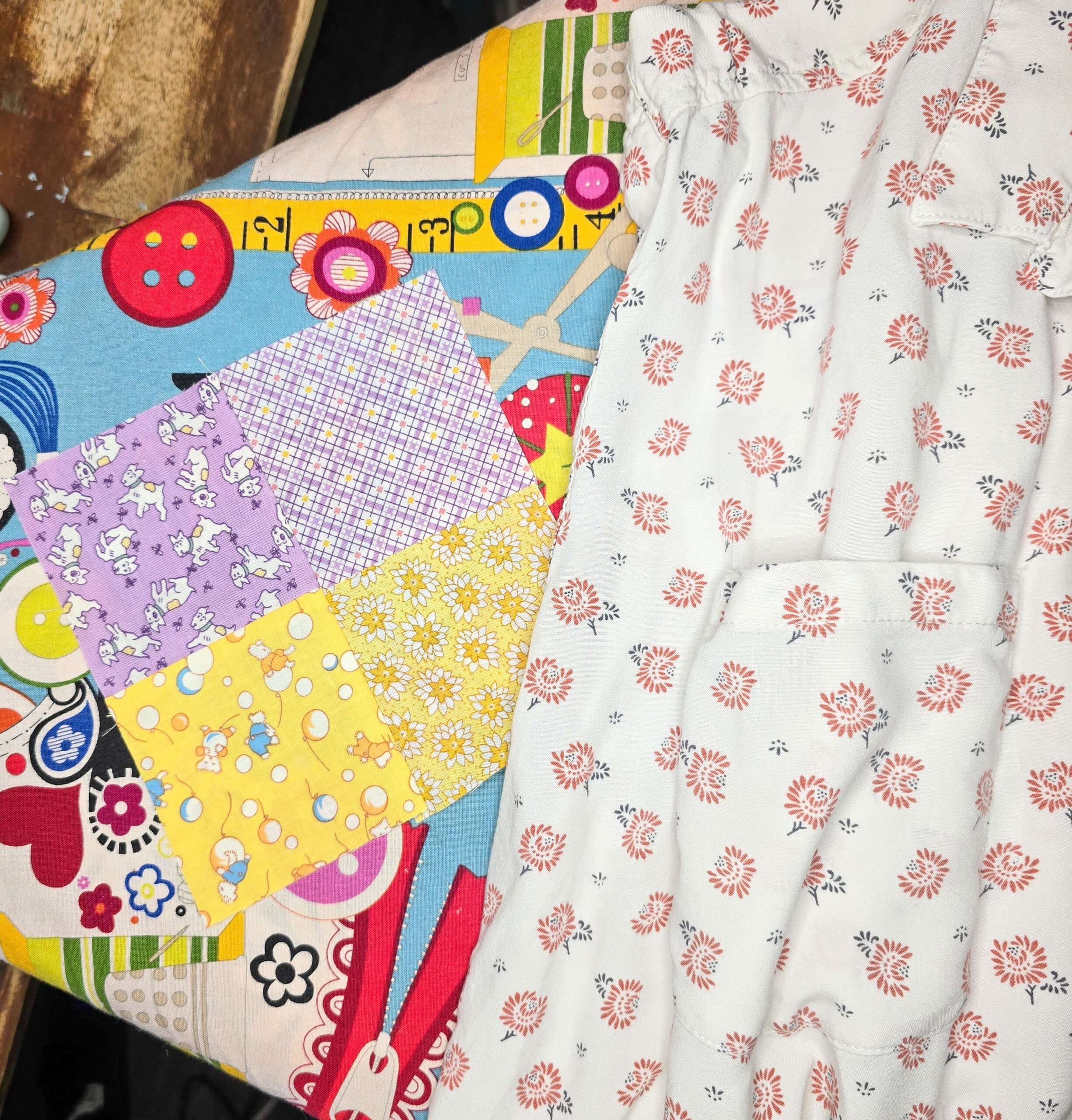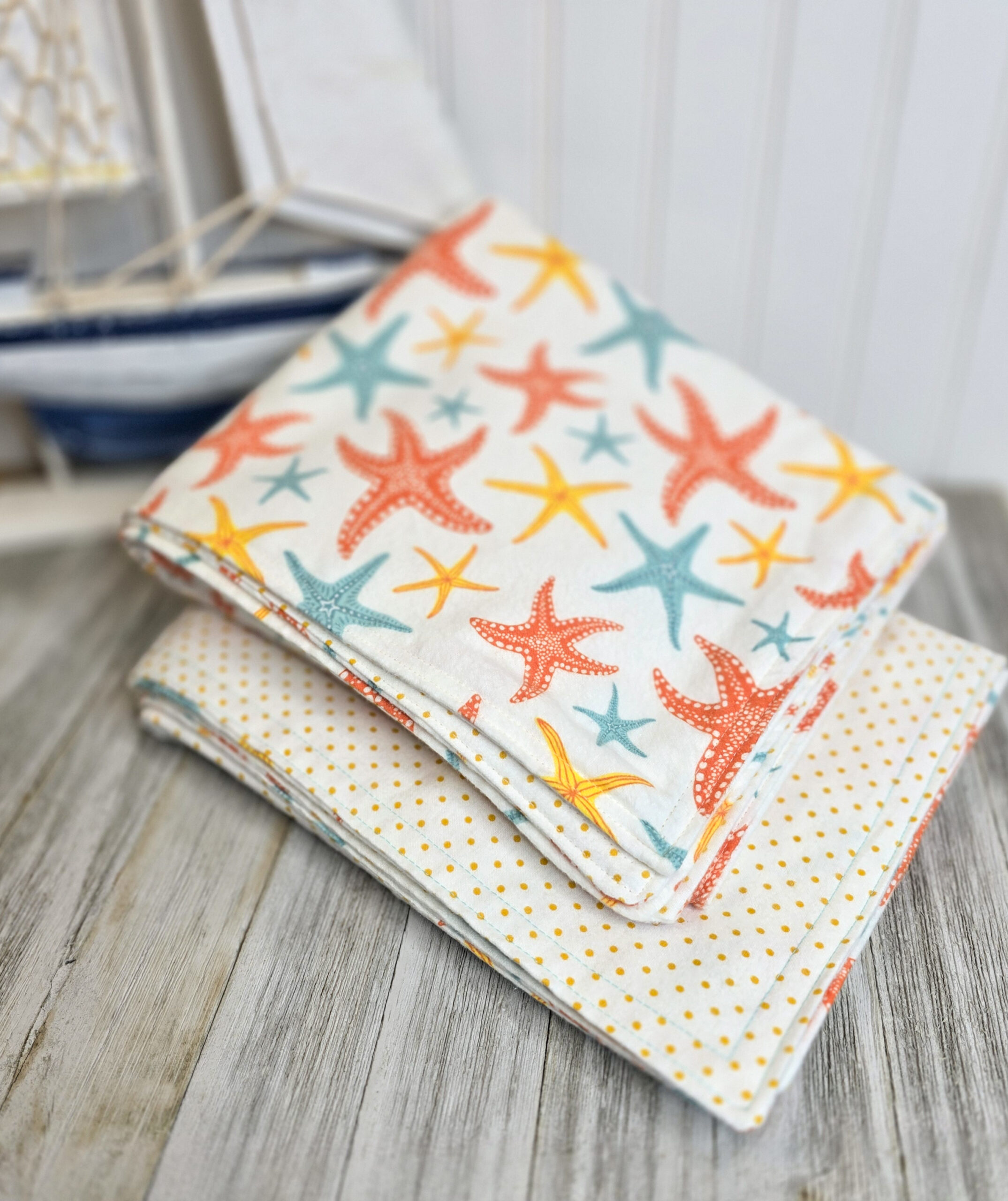I don’t remember the exact moment I realized that thread came in different weights, but I do remember wondering how they should be used. Thread weight is an important but often overlooked aspect of sewing that can make a big difference in your projects. Whether you’re quilting, topstitching, or sewing delicate fabrics, choosing the right thread weight ensures the best results in terms of strength, appearance, and durability.
Let’s talk about what thread weight means, how to choose the right one, and explore examples of fabric and thread pairings to help you make the best choice for your next sewing project.
What is Thread Weight?
Thread weight refers to the thickness of a thread, and it’s measured using a standard numbering system. The lower the weight number, the thicker the thread. Conversely, the higher the number, the finer the thread.
How Thread Weight Affects Your Project
It’s surprising when you realize that thread weight affects your sewing in a variety of ways!
- Strength & Durability
- Thicker threads (lower weight numbers) are stronger and provide more durability. These are ideal for projects that need extra reinforcement, like denim, upholstery, or visible topstitching.
- Finer threads (higher weight numbers) are great for lightweight, delicate fabrics where bulk isn’t desirable.
- Appearance & Finish
- If you want stitches to stand out (such as decorative quilting or topstitching), choose a thicker thread like 30 wt or 12 wt.
- For seams that need to blend in (such as garment construction or fine quilting), opt for a finer thread like 50 wt or 60 wt.
- Machine Tension & Needle Choice
- Thicker threads require a larger needle to accommodate their size. For example, a 90/14 needle works well with a 30 wt thread, while a 70/10 needle is better suited for a 60 wt thread.
- Finer threads work best with a smaller needle and lower tension settings.
Tips for Choosing the Right Thread Weight
✔ Consider the Fabric: Lightweight fabrics need finer threads, while thicker fabrics can handle stronger, thicker threads.
✔ Match Thread & Needle: Using the right size needle for your thread weight prevents skipped stitches and breakage.
✔ Test on Scrap Fabric: If you’re unsure, sew a few test stitches to see how the thread looks on your fabric before starting your project.
✔ Experiment with Decorative Stitches: If you want bold, visible stitches, try a 12 wt or 30 wt thread with a slightly longer stitch length.
At first glance, thread weight might seem like a small detail, but it plays a big role in how your sewing projects turn out. By giving a some thought about thread weight for your fabric and project, you’ll improve stitch quality, achieve the perfect finish, and avoid common sewing frustrations like bulk or weak seams. You’re welcome—now you’ll never see thread the same way again!






